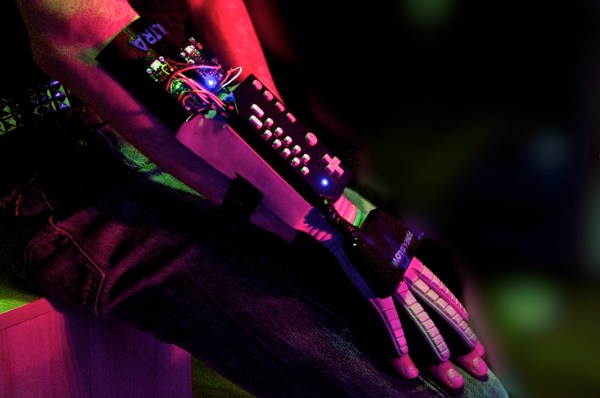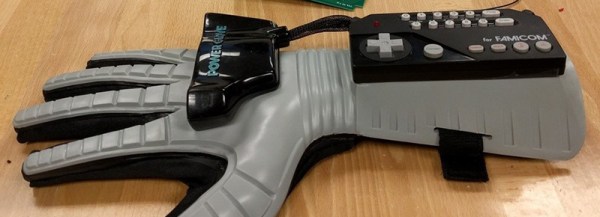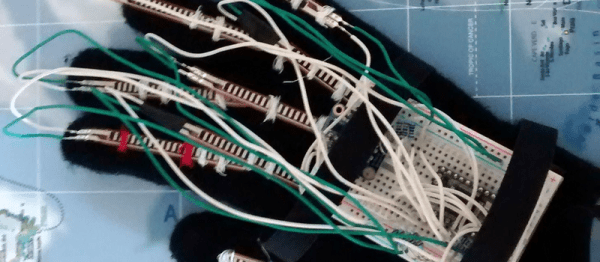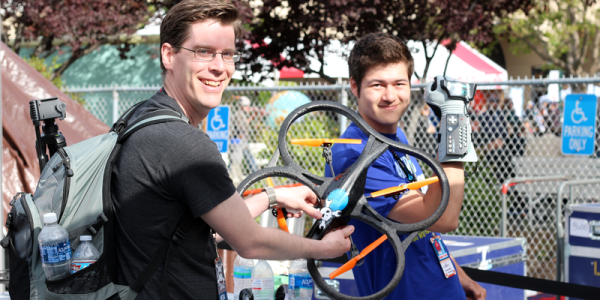You have to hand it to Nintendo, for blazing the virtual reality trail in consumer products a couple of decades before everyone else, even if the best that can be said for their efforts in that direction is that they weren’t exactly super-successful. Their 1989 Power Glove became little more than a difficult-to-use peripheral for everyday console games, and their 1995 Virtual Boy console was streets ahead of its time but had a 3D effect that induced discomfort in its players.
Many years later though, the Power Glove remains an intriguing product, and one that can be readily found second-hand. The folks at Teague Labs think that perhaps its time has come as the basis of a peripheral for modern VR systems, as a controller for the HTC Vive.
They’ve taken a Power Glove, and through an Arduino Due with a custom shield, interfaced it to the Vive controller mounted where the buttons would have been in its Nintendo days. The Vive provides positional data, while the Nintendo sensors provide hand data. Thus they’ve made an accomplished glove peripheral with a lot less heartache than they would have seen had they done so from scratch.
They show us a couple of environments using the glove, an iPad simulation which we’re having a little difficulty getting our heads round, and a rock/paper/scissors game which looks rather fun. If you are interested in further work, all their code is on GitHub.
We’ve shown you another hugely-upgraded Power Glove in the past, but how about one controlling a quadcopter?
























